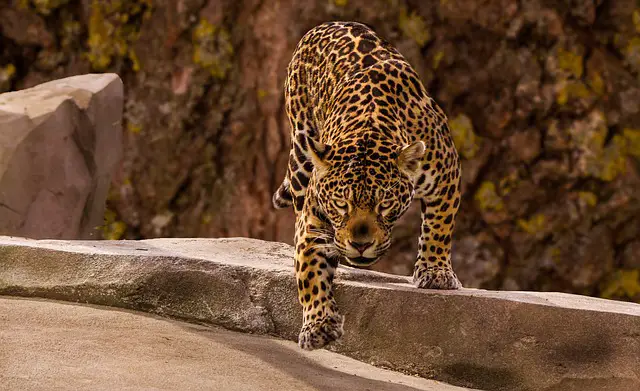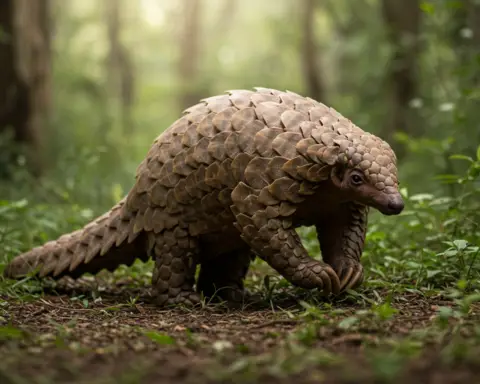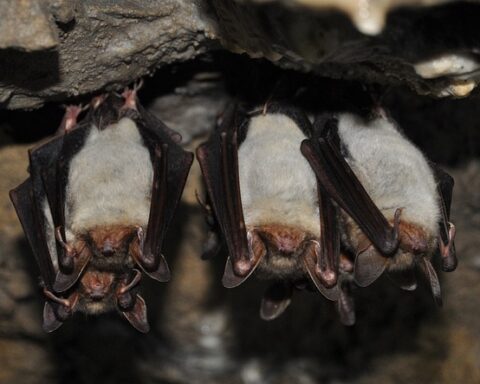Semi-aquatic reptiles like alligators must be around water. If you find yourself in one of these places, avoid them as much as you can. They are often faster on land than in water.
Swimming and Alligators
Alligators can swim well. Alligators excel at this skill, using their long tails to propel their bodies forward. Alligators have short arms that they can bend back as they swim. This gives them a smoother silhouette, which helps them move more quickly and easily. They are able to swim very quickly, but they are still often stationary in the water. It is often because they are not able to move in the water that they can make it more difficult for prey to see them.
Dry Land
The alligators are more mobile on dry ground. Their bodies drag on the earth when they’re walking on dry land. They carry their tails everywhere they go. Although they can’t sprint or be very agile on dry land they can run. Alligators are capable of running faster than people on land for short bursts. Because they can use their stomachs for speed, mud often aids their speed on the ground. They tend to be slow on land and are prone to making stops.
Faster in the water
Because of the short limbs of alligators, they don’t have a lot endurance on land. Alligators can run up to 11 mph at their fastest when they’re on the ground. This is not enough to keep up with their water swimming speed. They can sometimes go up to 20 mph while in the water.

Hunting Aggression
Do not approach any alligators you see in wild, even if they seem to be swimming in the river. It’s not unusual for them to pursue people. When alligators feel that someone has come too close to them, they can often react violently and quickly. You should exercise extreme caution when you are near alligator habitats such as marshes swamps creeks and ponds. The aggression of alligators can sometimes cause serious injuries to people. An alligator may be able run faster than yours in a single burst. This is why it’s so important to avoid taking any chance. You should not venture into the water with alligators.
The alligator is similar to the cheetah in that it can run extremely fast. You might have seen one leap up on its long muscular legs to sprint 500 meters (457m), across an open field after fleeing predators.
No. Perhaps you have never seen it. This is what you most likely witnessed: As you stand by a lagoon and watch for a pelican, you notice two small bumps protruding from the water. After you have taken note of the “Don’t Feed the Alligators” sign you will add two and two together to conclude that the bumps in the water are the eyes of the creature, which is lazily floating in the lake. The fear is temporary, but you soon remember the old adage that an alligator can only be saved if it runs in a zigzag. And you feel at ease.
But it should. It is difficult to understand why the saying is so popular. However, it does suggest that an alligator would likely chase you long distances when they are on land. Two, it suggests that alligators are faster than humans when they run straight.
Although alligators run at frightening speeds, they don’t have the speed to chase people long distances. It’s extremely rare for an gator to chase someone on dry land. A human could easily outrun an ally, zigzagging in any direction. The alligator can run at around 9.5 mph (15 kph) and cannot keep that pace for very long. Source: University of Florida
Furthermore, an alligator will not attack prey by sprinting long distances. The alligator prefers swimming in the water to get at its prey. It can swim 10 miles an hour (16 kilometers) faster than a runner. [source: University of Florida]. It can also be silent as it moves across water. It has eyes that are fixed to its top so it can see the surface and swim. It can also stay underwater for long periods of times and hold its breathe for up to an hour.
An alligator could be escaped if you ran in an zigzag. If you ran straight, you could probably escape an alligator. It is unlikely that an alligator will chase you on dry soil. This makes the old saying more of a joke than it is a wise one. It is simply not true.
Why would an alligator not chase you? What would happen if an alligator attacked you instead?
Contents
Why Alligators Avoid Humans
What to do if an alligator attacks you?
Stay Safe in Alligator Territory
Why Alligators Avoid Human Food
They are not likely to chase after you for long distances on dry soil, but they also won’t attack your body. Source: The Croc Docs Alligators are happy to eat easy food. They are patient hunters and will spend hours stalking their prey in water before they attack. However, once they are attacked, they don’t want to do too much work. Alligators will often abandon prey that fights them back. They won’t eat anything they can not swallow in one bite. Adult humans are often better off if the prey is small.
The majority are small alligators. An alligator with a length of less than 5 feet (1.5m) will normally eat crawfish, small reptiles and turtles. Small dogs don’t have to worry about them. They don’t pose a threat or danger to humans and are not likely to attack people in normal situations [source: Florida Fish and Wildlife Conservation Commission].
Sometimes, people mistakenly believe that an alligator smaller than 3 feet (0.9m) would make a good pet. Actually, the easiest way for people to be bitten is to try and capture an alligator. Even small alligators possess 60 to 80 razor-sharp tooth. Even though a bite might not be life-threatening, it is still worth visiting the hospital.
Although they are not as common as large alligators, they pose a serious threat to humans. A fully grown alligator, which can reach heights of between 8 and 11 feet (2.4 to 3.4 meters), could weigh upto 1,000 pounds (453kg). Even though alligators pose a threat, they remain cautious about humans. Alligators want to avoid human contact. People often assume an alligator is about to attack by snapping its jaws and growling. This is actually defensive behaviour.
Despite this, alligator biting is on the rise. Many of this is due the fact that they are no longer endangered. It could also be due to increased human interaction due development and population increase. Florida’s average bite was one from 1998 to 1999. In the years 2000 through 2016, however, this number increased to seven per day.
Many Sunshine State residents were scared by an alligator attack in South Florida that left one woman dead.
During feeding time at Everglades Wonder Gardens Bonita Springs, an alligator pair seems to be laughing while they open wide in search of a snack.
You should also remember that Florida is home to approximately 1.25 million alligators. Since 2010, however, there have been only five alligator-related alligator deaths in Florida. Do these toothy reptiles seem as terrifying as they make you think?
Gator Bill Robb (a retired trapper who continues to educate the public about alligators) was our first point of contact. Layne Hamilton, U.S. ambassador to FLORIDA TODAY, recommended him to the animal welfare organization. Fish and Wildlife Service manager for the Merritt Island National Wildlife Refuge Complex.
More: Davie woman found dead after being attacked by an alligator
More:Gator attack dismissed on Orange County woman’s body
More:Officers take 9-foot gator out of the yard
Here’s a list with common alligator tales. And whether they are factual or fiction.
Gator Bill Robb gives an educational presentation, complete with snapping turtles, alligators or snakes at DeLaura Middle school in 2013.
If an alligator is following you, zigzag!
Gator Bill – If you run backwards, aka zigzagging (or a running motion), it will reduce the distance between your and the alligator. Make sure you raise your hand, make yourself appear large and then move in a straight line.
Gators can run faster than horses for the first 40 miles
Gator Bill: It depends upon the situation and the size of the alligator. An alligator doesn’t usually run fast for the sake of running. He has a purpose and is a master of discipline. Average length for a gator is 7ft. An alligator who is very large might not be able run faster than an alligator of intermediate size. Young bulls are the most athletic, as they are still relatively new to the sport. They measure between 7 and 8 feet. The recommended scientific average for landing speed is 19 miles per hour. I don’t know how many times they can keep it going. It is far too long. That’s 120 feet. An alligator won’t run that long to chase someone. An alligator and a horse are unlikely to be matched for a race. The alligator’s speed is enough to accomplish the job.
“If an alligator chases you on land, you should run in the zig-zag fashion.” Have you ever heard this myth? You are unlikely to be chased by an Alligator on Land. Alligators dislike running over long distances. Although they can travel quite fast in the water, they tend to be slower when they move on land. Despite their weight and slow metabolism, alligators can run short bursts at speeds up to 30 mph. This speed is usually seen when an alligator is chasing prey along the banks of the river, and not running across large areas.
According to Florida Fish & Wildlife Conservation Commission it is not necessary to pay attention to alligators’ speed on the ground. Alligators, aquatic animals, hunt and capture prey near or in the water. Alligators will also eat carcasses from dead animals, as well as other crocodilians. They can also prey upon tethered or confined animal.
Even though alligators can run and they are capable of fleeing from danger, it is not something they do. There is no evidence to support the idea that alligators would chase down humans or any other land animal in an attempt to prey upon them. The myth that you should run in straight lines to avoid alligators is untrue. If you do find yourself in an unlikely (and unlucky) situation, you should not run in zig-zag patterns to avoid a charging alligator. Instead, you should keep your distance from the alligator as well as its habitat. It doesn’t matter how fast you can run (zig-zagging or not), you shouldn’t approach an alligator on land. You shouldn’t swim in water where one has been spotted.













